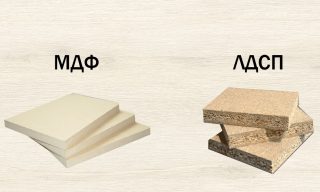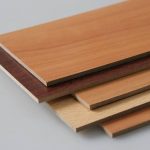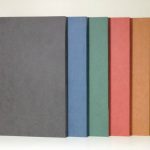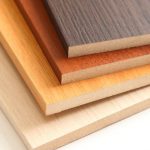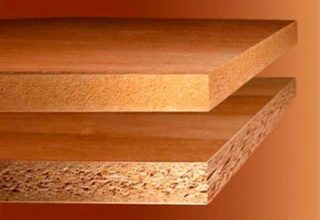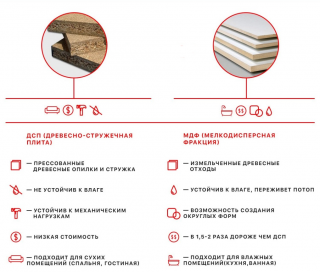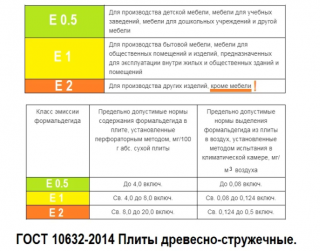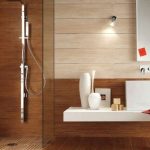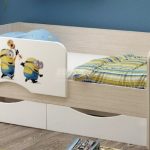The manufacturing processes for artificial slabs are similar, but only at first glance. A detailed examination leads to the identification of the technological and production difference between MDF and laminated chipboard. Materials are used as a substitute for natural wood in interior decoration, but each of them differs in properties.
Description of materials
Chipboard panels produce from larger wood particles - shavings... Manufacturing also involves the use of high temperature pressure. For gluing the particles, formaldehyde resins are used, which increase the moisture resistance of products.
Production
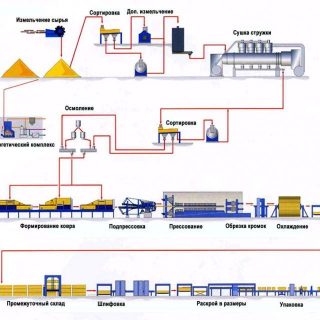
The prepared raw materials are sorted out, dried to a moisture content of 12 - 15%, mixed with additives, modifiers, form a tape from it. The resulting semi-finished product is pressed in heat chambers.
For the production of materials they take different components:
- MDF make from wood of a certain type, which contains a melting substance in the composition;
- Chipboard produce from any wood waste, the requirements for the content of lignin are not adhered to.
The press squeezes out air residues, the mass hardens. The resulting blanks are cut, polished, marked and stored before being sent to the supplier.
Properties, pros and cons of MDF
MDF is produced in the form of plates of different sizes and thicknesses. The most popular are the length of 2.8 m, the width of 1.25 and 2.17 m, the thickness varies from 3 to 40 mm.
Properties, pros and cons of laminated chipboard
Plates of material are produced in lengths from 2.44 to 2.75 m, width - 1.83 m, thickness of products is 6 - 25 mm.
Comparative characteristics
Slabs MDF easily amenable to milling, processing.
By type of coverage there are types:
- laminated with PVC film, melamine, tar paper of different texture;
- painted are glossy, matte with the use of protective paints and varnishes;
- veneered with a sticker of a thin cut of natural wood.
Coating laminated particle boards made of moisture resistant PVC film (0.05 - 0.8 mm), varnish. The layer is applied by gluing or laminating (melting at high temperatures).Depending on the processing method and quality, three types of wood-based products are distinguished. The first assumes complete absence of defects, and the third is of low quality.
Care of materials
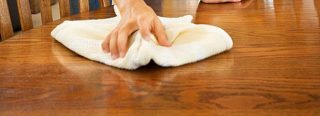
There are general rules of care and differences. Both artificial finishing materialsdo not tolerate steam and temperatures above + 75 ° С... In this case, the top finishing layer may flake off.
There are rules that must be followed for one of the types, but for the other, their observance does not matter:
- Influence of sunlight more dangerous for particle boards. Products made from finely dispersed fraction will also fade, but they will retain their original color for a longer time.
- Humidity more dangerous for laminated chipboard products, since slabs are more often produced with untreated ends. Moisture-resistant MDF strips with sides covered with PVC foil can even withstand direct water ingress for some time.
Clean the slabs with a damp sponge and a little detergent.
Strength and density
Strength indicators both types:
- MDF. Flexural strength - 18 - 23 N / mm², breaking strength - 0.55 - 0.65 N / mm², modulus of elasticity - 2100 - 2700 N / mm².
- Chipboard. Flexural strength - 14 - 18 N / mm², breaking strength - 0.25 - 0.4 N / mm², modulus of elasticity - 1800 - 2600 N / mm².
MDF is also produced with low density (LDF marking), the indicator can reach 200 - 600 kg / m³. There are products with high density (NDF) in the category of finely dispersed panels, the desired value of which exceeds 800 kg / m³.
Moisture resistance
Laboratory research data on wetting the material during the day:
- fine-dispersed slabs increase in thickness by 10 - 17% in 24 hours;
- laminated particle boards are 22% thicker than they originally were.
Plays the role of the waterproofing of the finishing layer. If the cladding is placed on a floor or wall, which is saturated with moisture from the foundation, the installation of a protective membrane is required.
Environmental friendliness
For the difference by the degree of emission there are classes:
- E1 - formaldehyde content is allowed not more than 8 mg per one cubic meter of dry material. The air should not contain more than 0.124 mg per 1 m³ (chamber determination method). The gas analytical method provides for no more than 5 mg within 3 days from the date of the panel release or no more than 3.5 mg / m² · hour.
- E2 - the category includes materials that contain 8 - 30 mg formaldehyde per cubic meter of dry mass. Free release into the surrounding atmosphere should not exceed 0.124 mg per 1 m³, or 3.5 - 8.0 mg / m² · hour, or 5 - 12 mg within three days from the end of production.
From MDF and chipboard, the first material is more suitable for home decoration.
Durability
This operational parameter is largely depends on the conditions of use of the material. Plates can be used for wall decoration, placed as a countertop in a kitchen set. In the first case, the lining will last longer, and in the second, everything will depend on aggressive factors: fat, hot drops.
MDF panels are more resistant to high temperatures, PVC, plastic and veneer layers contribute to this.Wood-based products are less dense, therefore they are more likely to become unusable.

What to choose: MDF or chipboard
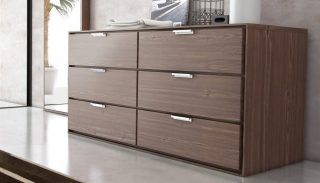
Both types of panels are used for walls, floors, and sometimes ceilings. Chipboard products are used in rooms where there is no round-the-clock human presence. Materials emit toxic substances into the air in an acceptable amount. Slabs made of finely dispersed fraction do not have such a problem, therefore the scope of application is living quarters, balconies, loggias, verandas, corridors and interior rooms of the house. They make window sills, window slopes, screens for batteries, door leaves.
Features of using plates:
- For kitchen. There is humid steam in the room, the air heats up during cooking. Hot liquid, water, grease gets on the surface of kitchen walls, countertops. For the kitchen, choose the material with the best indicators of resistance to aggressive influences. MDF panels are suitable, and particle boards are placed as a subfloor. The ends of the furniture are glued with plastic, polyvinyl chloride film.
- For bathroom. Indoors, water jets enter the walls, therefore materials with a low sensitivity to moisture are used. It is better to take laminated MDF, which is processed on both sides and a protective film is installed on the side sections. When cutting, uncovered ends appear. They must be painted with a protective compound. The joints between the floor and the ceiling are covered with a plinth.
- For the nursery. We need a material of emission class E1, this category includes MDF panels. The walls are trimmed with material. For floors, boards with a veneered layer of natural wood are used. Sometimes they cover only the lower part of the walls in the form of panels, combining the cladding with other decorative finishes. Furniture and beds are made from the material, so the products are carefully selected for quality and environmental friendliness.
- For the bedroom. The room also provides for environmentally friendly material in the form of MDF panels. The slopes of the balcony exit are often faced with laminated MDF to emphasize the chosen design of the room. Products with veneer are suitable for flooring. After installation, the coating is varnished to extend its service life.

MDF panels are more expensive than laminated chipboard. The cost calculation includes the price of raw materials, production and transportation costs.
The lower cost of the material from the shavings is explained by the lower costs of processing raw materials, the absence in the technological process of units for fluffing and drying fibers.

